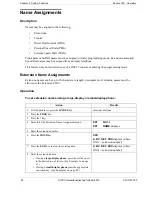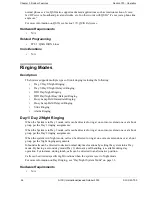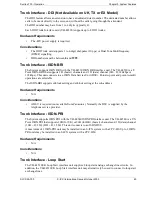
56
S-ICX (International) issued October 2000
S-ICX-50-700
Chapter 3. System Features
Section 700 - Operation
normal phone service, QSIG also supports advanced applications such as interconnection of voice/
fax/DP servers, broadband private networks, etc. In other words with QSIG “it’s not just a phone line
anymore.”
For more information on QSIG, see
Section 570: QSIG Reference
.
Hardware Requirements
•
N/A
Related Programming
•
FF2-1: QSIG ISDN Lines
Considerations
•
N/A
Ringing Modes
Description
The System supports multiple types of trunk ringing including the following:
•
Day 1/Day 2/Night Ringing
•
Day 1/Day 2/Night Delayed Ringing
•
DDI Day/Night Ringing
•
DDI Day/Night Busy/Delayed Ringing
•
Busy Lamp Field Immediate Ringing
•
Busy Lamp Field Delayed Ringing
•
Slide Ringing
•
Alarm Ringing
Day 1/ Day 2/Night Ringing
When the System is in Day 1 mode, calls can be directed to ring at one or more extensions or at a hunt
group per the Day 1 ringing assignments.
When the System is in Day 2 mode, calls can be directed to ring at one or more extensions or at a hunt
group per the Day 2 ringing assignments.
When the system is in Night mode, call can be directed to ring at one or more extensions or at a hunt
group per the Night ringing assignments.
Inbound calls can be directed to desired normal daytime locations by setting the system into a Day
mode. By having a second day mode (Day 2) alternative call handling is available during day
operation. For instance, during lunch, calls can be directed to an alternative position.
Calls can be directed specific night locations when the system is set to Night mode.
For more information on Day Ringing, see “Day/Night System Mode” on page 33.
Hardware Requirements
•
N/A
















































